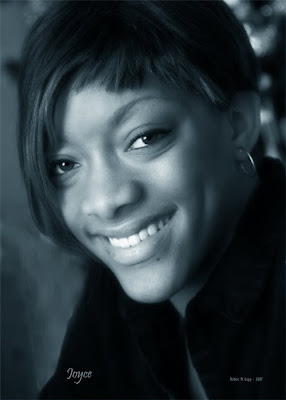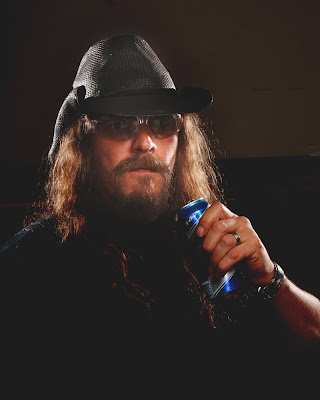" How do you get the "WOW" factor, immediately, without having to do PhotoShop?"
How do you get the "WOW" factor, immediately, without having to do PhotoShop?"
When going for the "WOW Factor," you're correct about the cropping: it makes all the difference. I used to have to do that in the camera when I worked in a portrait studio because there was no Photoshop then and there wasn't time to mess with the shots, anyway. That was GREAT training. HARD training that I didn't like much at the time, but a really good lesson.
It is really a matter of practice, but it's worth the effort to quickly scan your viewfinder, eliminate extraneous elements - things or space that do not contribute to telling the story that was the reason for makiing the photograph.
Make as many of the cropping decisions that you will eventually have to do in Photoshop, anyway, right in the viewfinder before you squeeze the shutter release. This exercise will make you a better, photographer by making your images more powerful. The constant self-editing will improve your sense of story much, much more quickly than hours on the computer trying to "fix" what was never there. I was forced to light, compose, and expose this black and white shot of Joyce in three minutes. I don't recommend that kind of pressure, but without the practice of constantly 'finishing" my compositions in the viewfinder before I shoot them, I would never have been able to make this photograph, one of my favorites.
That said, one interesting thing I noticed is that, in the old days, I was in the dark room - and now in Photoshop - working very hard and taking tons of time bringing the best out of my shots. However, there is an upside to this: it happens to be a great teacher, too. Every time you have to do work to fix bad composure, exposure, color, etc., it drills it into your head not to do that again. You get better at seeing it in the camera's framing when you shoot, rather than later. So, the work in Photoshop/LightRoom is not wasted and actually has an unintended consequence, if you can call it that: by being forced to fix your shots later, you learn to see more correctly in the first place. It drills it into your head in a way that might never happen without that practice and Monday morning quarterbacking.
 How do you get the "WOW" factor, immediately, without having to do PhotoShop?"
How do you get the "WOW" factor, immediately, without having to do PhotoShop?"When going for the "WOW Factor," you're correct about the cropping: it makes all the difference. I used to have to do that in the camera when I worked in a portrait studio because there was no Photoshop then and there wasn't time to mess with the shots, anyway. That was GREAT training. HARD training that I didn't like much at the time, but a really good lesson.
It is really a matter of practice, but it's worth the effort to quickly scan your viewfinder, eliminate extraneous elements - things or space that do not contribute to telling the story that was the reason for makiing the photograph.
Make as many of the cropping decisions that you will eventually have to do in Photoshop, anyway, right in the viewfinder before you squeeze the shutter release. This exercise will make you a better, photographer by making your images more powerful. The constant self-editing will improve your sense of story much, much more quickly than hours on the computer trying to "fix" what was never there. I was forced to light, compose, and expose this black and white shot of Joyce in three minutes. I don't recommend that kind of pressure, but without the practice of constantly 'finishing" my compositions in the viewfinder before I shoot them, I would never have been able to make this photograph, one of my favorites.
That said, one interesting thing I noticed is that, in the old days, I was in the dark room - and now in Photoshop - working very hard and taking tons of time bringing the best out of my shots. However, there is an upside to this: it happens to be a great teacher, too. Every time you have to do work to fix bad composure, exposure, color, etc., it drills it into your head not to do that again. You get better at seeing it in the camera's framing when you shoot, rather than later. So, the work in Photoshop/LightRoom is not wasted and actually has an unintended consequence, if you can call it that: by being forced to fix your shots later, you learn to see more correctly in the first place. It drills it into your head in a way that might never happen without that practice and Monday morning quarterbacking.

Nailing down the exposure and added light (read CONTROLLED light), whether from reflectors or flash, or hot lighting or video light, or window light, will give the WOW factor immediately, and save on the photoshopping. We all need to do more of that. An evening fooling around experimenting, with no pressure helps enormously.
Photography is like any other work. It's easy for any professional, relatively speaking, because there is so much they "just know." They couldn't remember where or when they learned it, they "just know it." They picked it up over years of working with their professions and slowly learning their foibles and weirdness; it's far, far more than they think they know or could even list. But if they tried to start training someone from scratch, imagine how difficult it would be to put all those little things that they "just know" into their students' heads. Big job.
Don't underestimate the challenge. Those people all around you are snapshot-ers, not photographers. A good eye or a pretty subject does not make a photographer; knowledge of light and composition does. Control does. If someone has to make 100 pictures to "get a good one," they are a snapshot-er. You are going to be a photographer!






